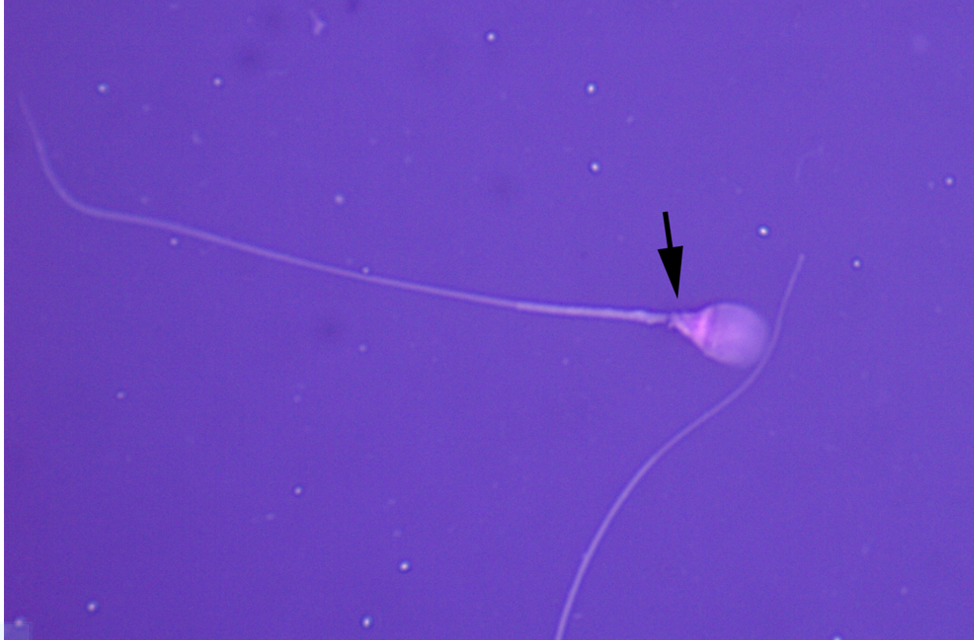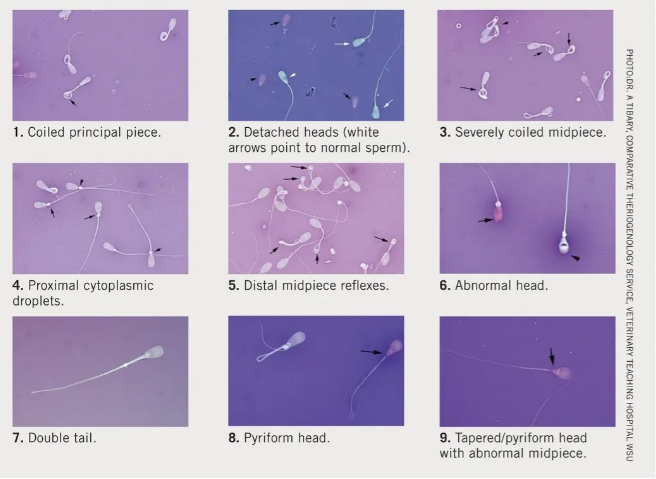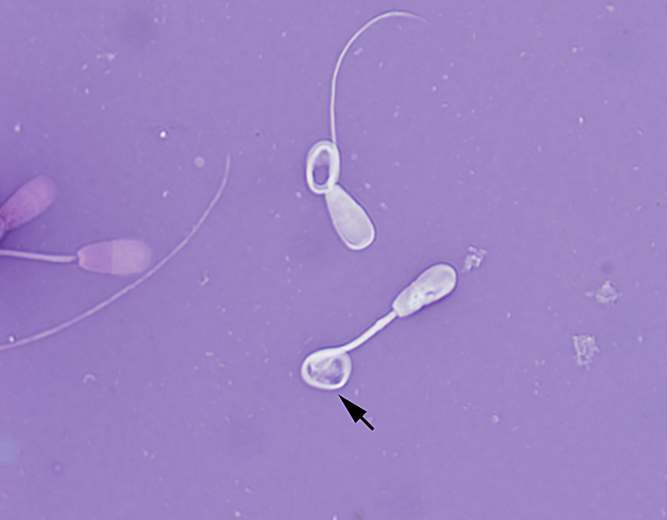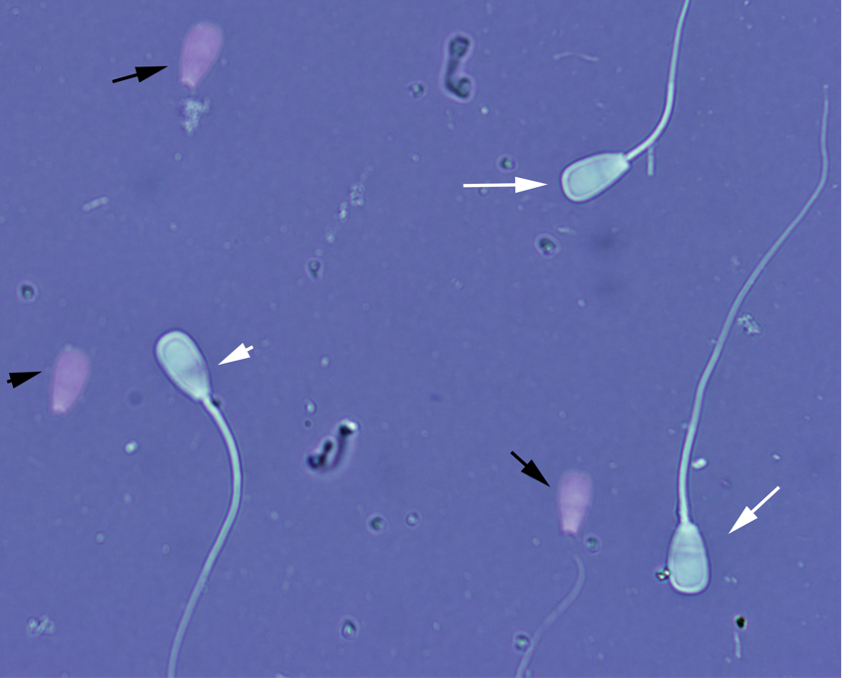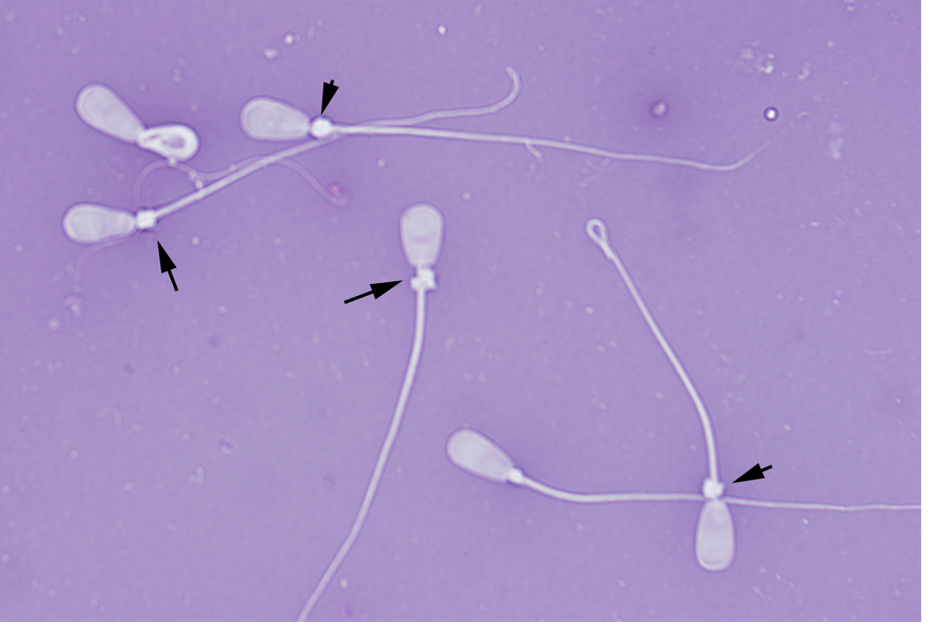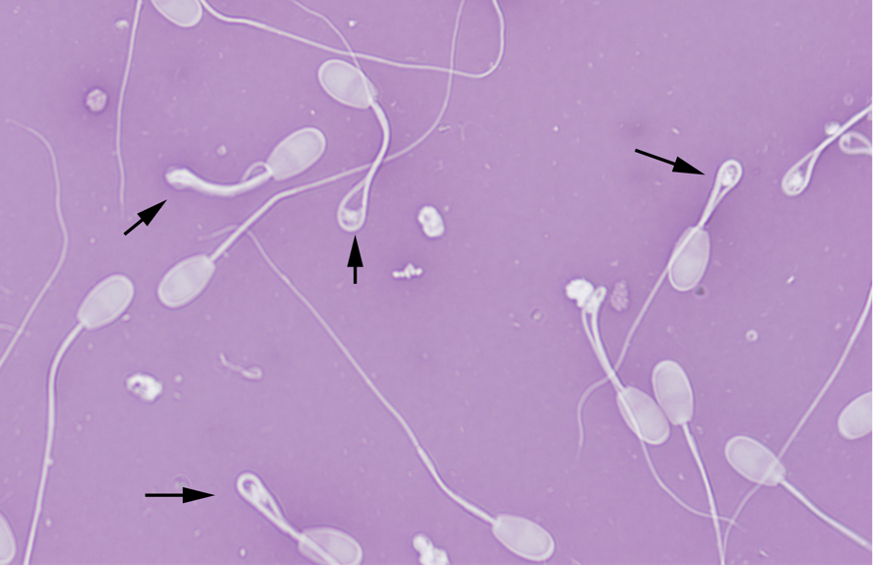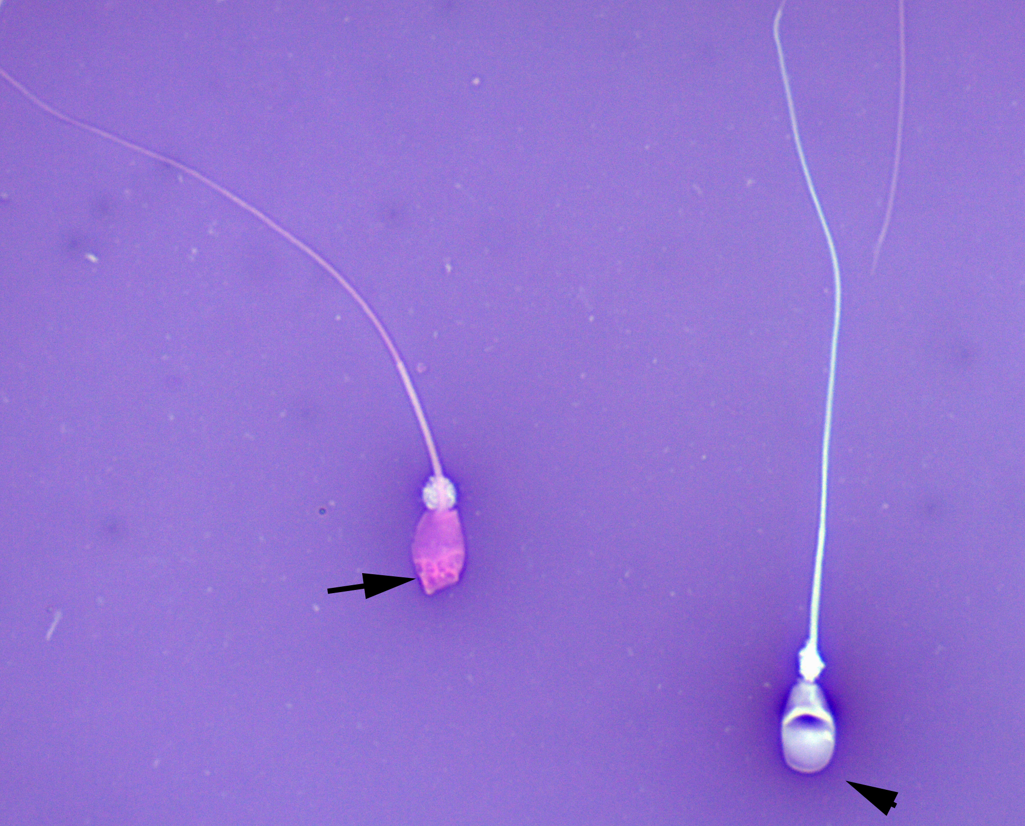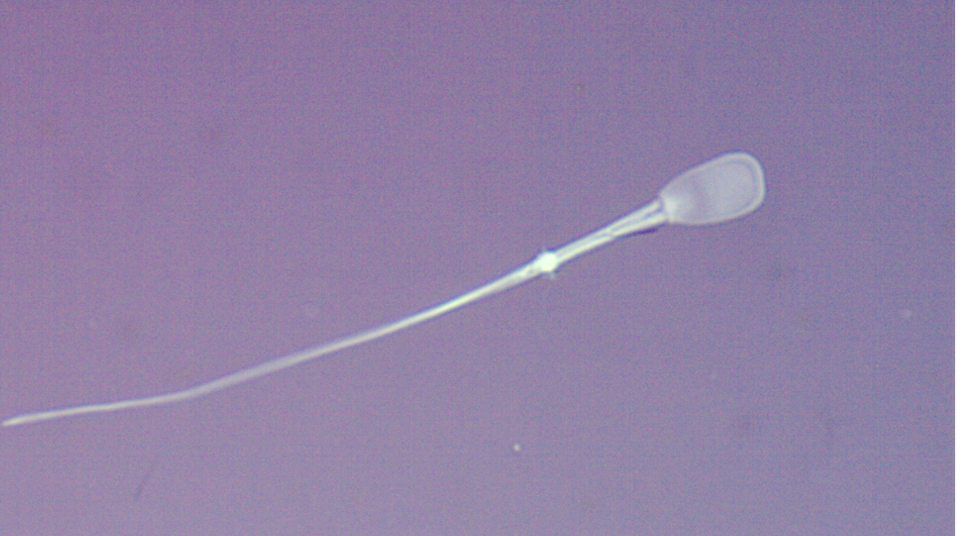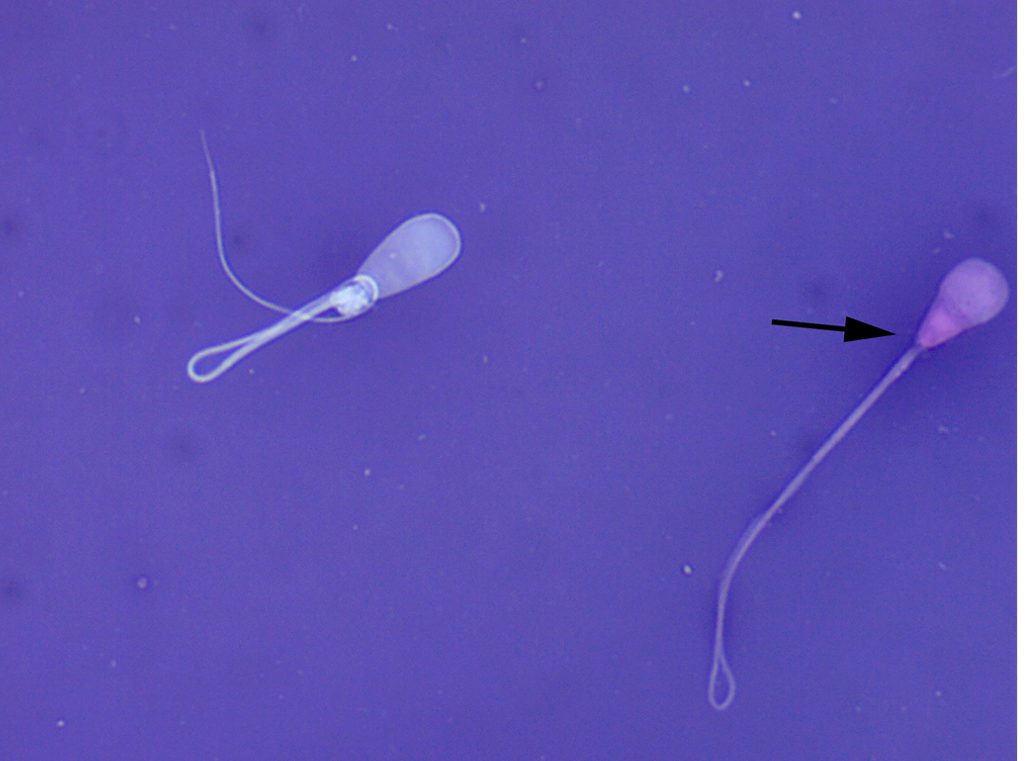50% of Bulls Fail BSEs due to Poor Sperm Morphology
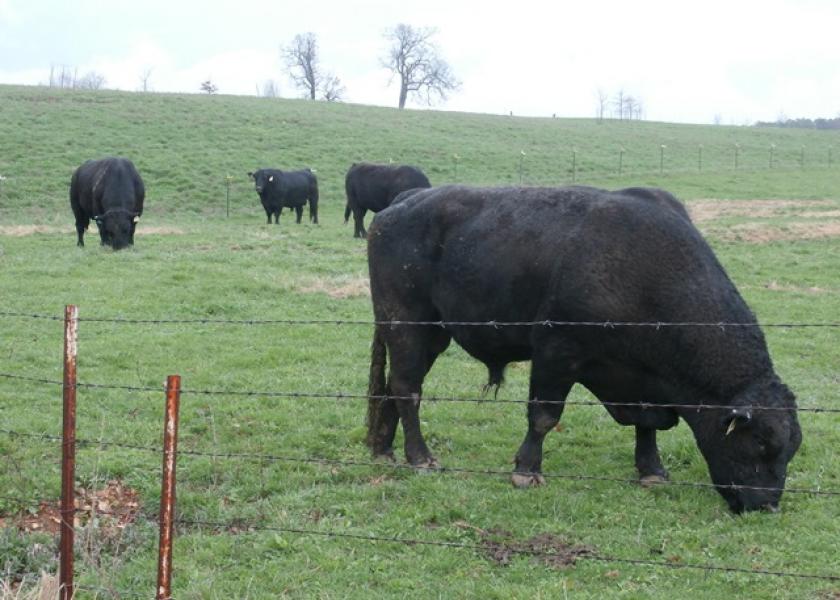
Data show that one of every five bulls tested fails a breeding soundness exam, according to the Society of Theriogenology, an organization dedicated to animal reproduction. A variety of reasons for that exists, says Jennifer Koziol.
“Multiple studies have shown us that about 50% of the bulls that fail breeding soundness exams do so because of poor sperm morphology,” says Koziol, DVM, MS, DACT, clinical assistant professor, Purdue College of Veterinary Medicine.
For a bull to pass a BSE as a “satisfactory potential breeder,” the Society maintains that 70% morphologically normal sperm – along with 30% progressively motile cells -- is the minimum standard.
But evaluating sperm morphology is not always a simple process. “The assessment is tedious and takes time,” notes Ahmed Tibary, DVM, MS, DSc, PhD, DACT, Washington State University professor and president-elect of the Society.
Some abnormalities of semen are difficult to see with the common staining techniques practitioners use. “Slide preparation is important; when in doubt fix semen samples in phosphate-buffered saline,” he recommends. “It’s also important to have a system to keep the slides and semen warm for evaluation of motility.”
Koziol says veterinarians need to look at sperm morphology at a high power with oil, with either brightfield or phase microscopy. “Looking at morphology slides at anything less than 1000X under oil or just looking at sperm motility and calling a bull satisfactory isn’t good enough,” she says.
Glen Jensen encourages practitioners to consider using a complete differential spermiogram (CDS) in their assessment of sperm morphology. A CDS breaks down and lists each of about 24 morphological abnormalities recognized by the Society, providing a more complete picture of the bull’s sperm production and quality.
“A significant benefit comes when we utilize the potential influences each type of morphological abnormality can have on fertility,” says Jensen, DVM, Emery Animal Health & Integris Cattle, Castle Dale, Utah.
Examples of this include detached heads and distal midpiece reflexes, which he says have very little negative effect on fertility until they reach levels of between 30% and 40 % in the ejaculate. On the other hand, he says proximal cytoplasmic droplets, nuclear vacuoles, and pyriform heads will begin to negatively impact fertility at around 15% to 20% of the ejaculate.
“Without a CDS this information is missing, and some subfertile bulls will be used while other bulls will receive an unsatisfactory classification yet would perform well,” Jensen says. “Using a CDS, veterinarians can better help producers make informed breeding management decisions through selecting the correct bulls for optimal herd reproductive performance.
Tibary routinely addresses common bull sperm abnormalities with his students at the Washington State University Veterinary Teaching Hospital.
“Describing the proportion of individual abnormalities is often not done in regular breeding soundness evaluations. However, in cases where the bull has a great value or there are many bulls failing because of the same abnormalities, this becomes very important in determining the possible causes and prognosis,” he adds.
Here are nine of the common abnormalities Tibary says to be on the lookout for:
Below are cropped copies of the nine photos above to, hopefully, give you a better perspective on the common sperm problems Dr. Tibary identified and highlighted in photographs:
1. Coiled principal piece
2. Detached heads are the black arrows/purple sperm. White arrows point to normal sperm.
3. Severely coiled midpiece
4. Proximal cytoplasmic droplet
5. Distal midpiece reflexes
6. Abnormal Head
7. Double Tail
8. Pyriform Head
9. Tapered/pyriform head with abnormal midpiece
